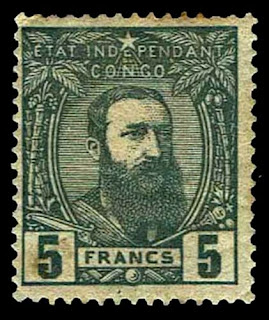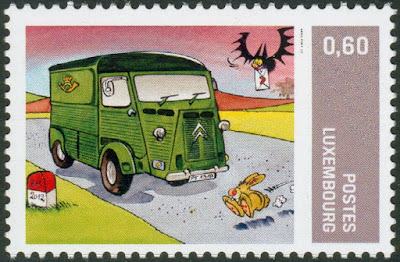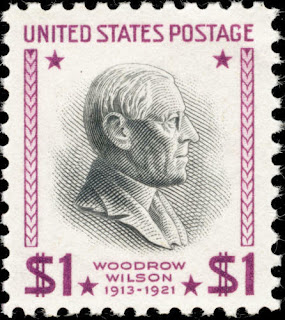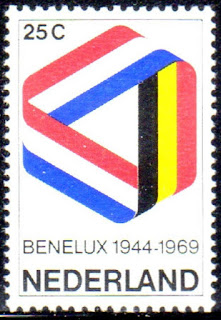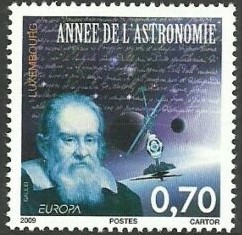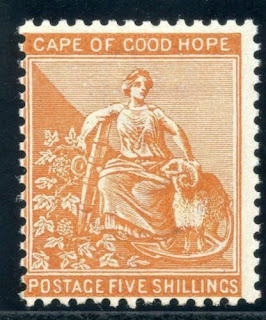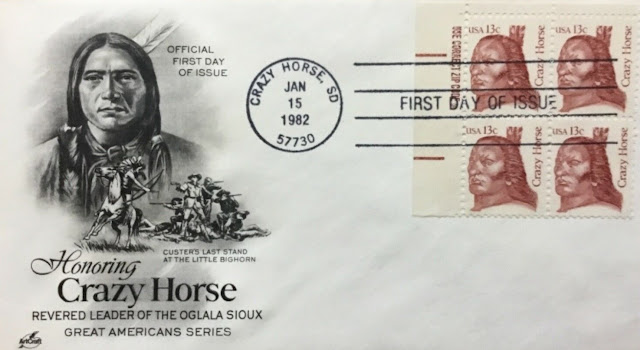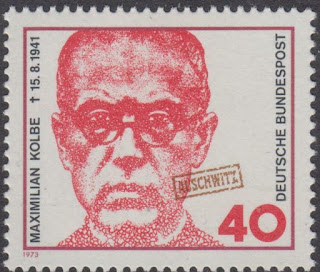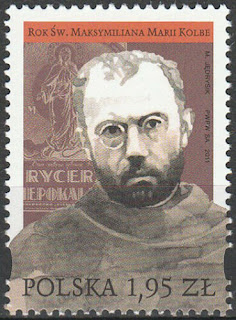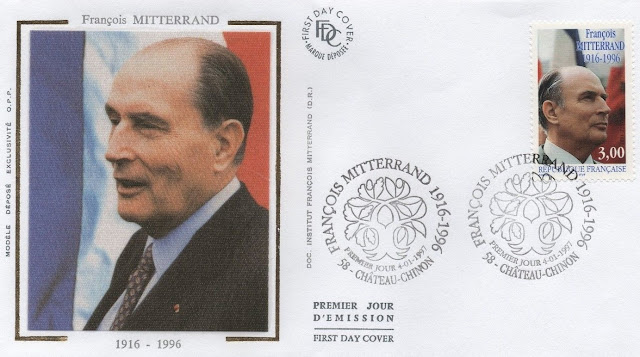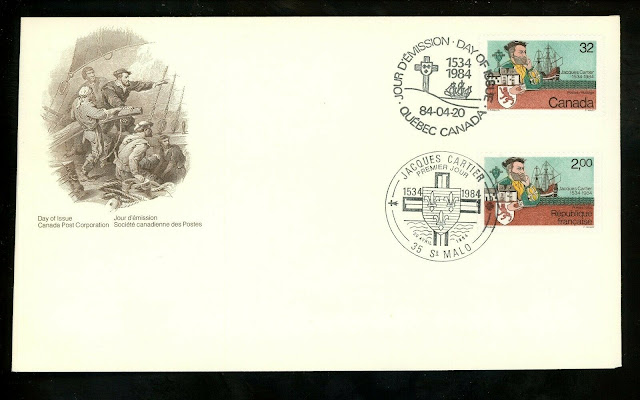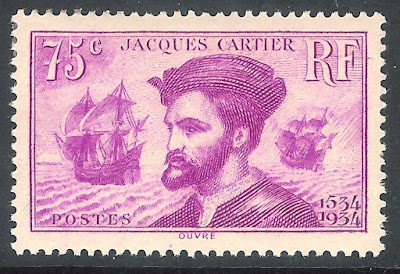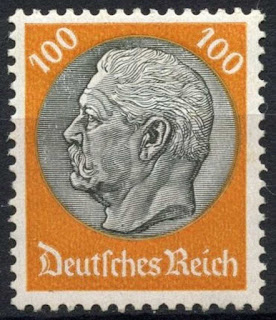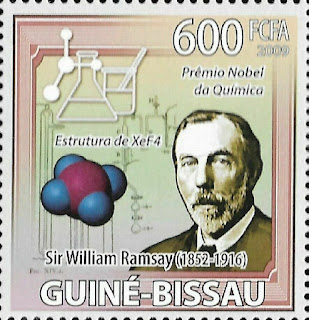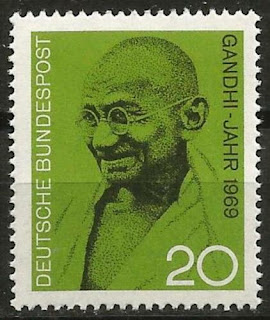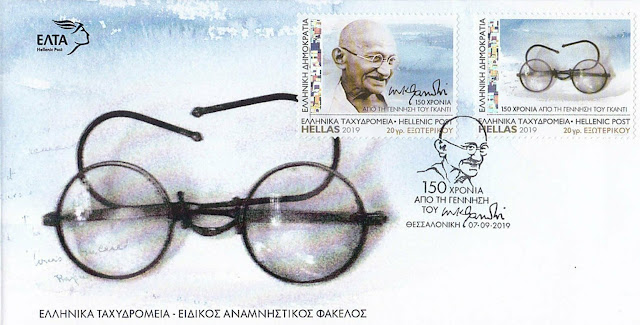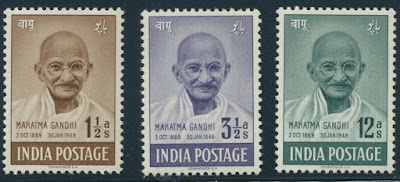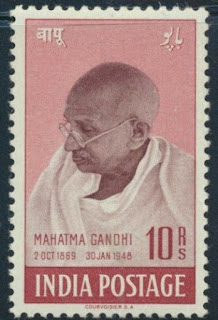Here are some events that happened on February 5th. It could be an event or a person that died or was born on that day
1885 – King Leopold II of Belgium establishes the Congo as a personal possession.
Leopold II (9 April 1835 – 17 December 1909) was King of the Belgians from 1865 to 1909. Born in Brussels as the second but eldest surviving son of Leopold I and Louise of Orléans, he succeeded his father to the Belgian throne in 1865 and reigned for 44 years until his death – the longest reign of any Belgian monarch. He died without surviving male heirs. The current Belgian king descends from his nephew and successor, Albert I.
Leopold was the founder and sole owner of the Congo Free State, a private project undertaken on his own behalf. He used Henry Morton Stanley to help him lay claim to the Congo, the present-day Democratic Republic of the Congo. At the Berlin Conference of 1884–1885, the colonial nations of Europe authorized his claim by committing the Congo Free State to improving the lives of the native inhabitants. Leopold ignored these conditions and ran the Congo using the mercenary Force Publique for his personal gain. He extracted a fortune from the territory, initially by the collection of ivory, and after a rise in the price of rubber in the 1890s, by forced labor from the native population to harvest and process rubber. He used great sums of the money from this exploitation for public and private construction projects in Belgium during this period. He donated the private buildings to the state before his death, to preserve them for Belgium.
Leopold's administration of the Congo was characterized by murder, torture, and atrocities, resulting from notorious systematic brutality. The hands of men, women, and children were amputated when the quota of rubber was not met. These and other facts were established at the time by eyewitness testimony and on site inspection by an international Commission of Inquiry (1904).
Millions of the Congolese people died: modern estimates range from 1 million to 15 million deaths, with a consensus growing around 10 million. Some historians argue against this figure, citing the absence of reliable censuses, the enormous mortality of diseases such as smallpox or sleeping sickness, and the fact that there were only 175 administrative agents in charge of rubber exploitation.
In 1908, the reports of deaths and abuse induced the Belgian government to take over the administration of the Congo from Leopold.
Stamps from Belgium and Belgian Congo depicting Leopold II
1878 Born: André Citroën, French engineer and businessman, founded Citroën (d. 1935)
André-Gustave Citroën (5 February 1878 – 3 July 1935) was a French industrialist and freemason of Dutch and Polish Jewish origin. He is remembered chiefly for the make of car named after him, but also for his application of double helical gears.
Citroën founded the Citroën automobile company in 1919, leading it to become the fourth largest automobile manufacturer in the world by the beginning of the 1930s. Costs for developing the model Traction Avant, which improved the sales for the company, led to bankruptcy in 1934. It was taken over by the main creditor Michelin, who had provided tires for the cars.
He died in Paris, France, of stomach cancer in 1935 and was interred in the Cimetière du Montparnasse, the funeral being led by the Chief Rabbi of Paris.
Stamps depicting Citroën cars
1922 Died: Slavoljub Eduard Penkala, Croatian engineer, invented the mechanical pencil (b. 1871)
Slavoljub Eduard Penkala (20 April 1871 – 5 February 1922) was a Croatian engineer and inventor of Dutch-Polish descent. Eduard Penkala was born in Liptószentmiklós (now Liptovský Mikuláš), then part of Austria-Hungary, to Franciszek Pękała, who was of Polish heritage, and Maria Pękała (née Hannel), who was of Dutch descent. He attended the University of Vienna and Royal Saxon Polytechnic Institute, graduating from the latter on March 25, 1898, and going on to earn a doctorate in organic chemistry. During his studies, he attended violin lessons where he met his future wife, pianist Emily Stoffregen. He then moved with his wife to Zagreb (which was then in the Kingdom of Croatia-Slavonia). To mark his loyalty to his new homeland, he took on the Croatian name Slavoljub (the equivalent of slavophile), becoming a naturalized Croat.
He became renowned for further development of the mechanical pencil (1906) - then called an "automatic pencil" - and the first solid-ink fountain pen (1907). Collaborating with an entrepreneur by the name of Edmund Moster, he started the Penkala-Moster Company and built a pen-and-pencil factory that was one of the biggest in the world at the time. The company, now called TOZ Penkala, still exists today.
Croatian stamp issued to commemorate Penkala
Showing posts with label Luxembourg. Show all posts
Showing posts with label Luxembourg. Show all posts
Wednesday, February 05, 2020
Monday, February 03, 2020
February 3rd in stamps Mendelssohn Junkers, Wilson, Benelux
Here are some events that happened on February 3rd. It could be an event or a person that died or was born on that day
1809 Born: Felix Mendelssohn, German pianist, composer, and conductor (d. 1847)
Jakob Ludwig Felix Mendelssohn Bartholdy (3 February 1809 – 4 November 1847), born and widely known as Felix Mendelssohn, was a German composer, pianist, organist and conductor of the early Romantic period. Mendelssohn's compositions include symphonies, concertos, piano music and chamber music. His best-known works include his Overture and incidental music for A Midsummer Night's Dream, the Italian Symphony, the Scottish Symphony, the oratorio Elijah, the overture The Hebrides, his mature Violin Concerto, and his String Octet. The melody for the Christmas carol "Hark! The Herald Angels Sing" is also his. Mendelssohn's Songs Without Words are his most famous solo piano compositions.
A grandson of the philosopher Moses Mendelssohn, Felix Mendelssohn was born into a prominent Jewish family. He was brought up without religion until the age of seven, when he was baptized as a Reformed Christian. Felix was recognized early as a musical prodigy, but his parents were cautious and did not seek to capitalize on his talent.
Mendelssohn enjoyed early success in Germany, and revived interest in the music of Johann Sebastian Bach, notably with his performance of the St Matthew Passion in 1829. He became well received in his travels throughout Europe as a composer, conductor and soloist; his ten visits to Britain – during which many of his major works were premiered – form an important part of his adult career. His essentially conservative musical tastes set him apart from more adventurous musical contemporaries such as Franz Liszt, Richard Wagner, Charles-Valentin Alkan and Hector Berlioz. The Leipzig Conservatory, which he founded, became a bastion of this anti-radical outlook. After a long period of relative denigration due to changing musical tastes and antisemitism in the late 19th and early 20th centuries, his creative originality has been re-evaluated. He is now among the most popular composers of the Romantic era.
Stamps from Vatican, East Germany and Germany depicting Felix Mendelssohn
1859 Born: Hugo Junkers, German engineer, designed the Junkers J 1 (d. 1935)
Hugo Junkers (3 February 1859 – 3 February 1935) was a German aircraft engineer and aircraft designer who pioneered the design of all-metal airplanes and flying wings. His company, Junkers Flugzeug- und Motorenwerke AG (Junkers Aircraft and Motor Works), was one of the mainstays of the German aircraft industry in the years between World War I and World War II. His multi-engined, all-metal passenger- and freight planes helped establish airlines in Germany and around the world.
In addition to aircraft, Junkers also built both diesel and petrol engines and held various thermodynamic and metallurgical patents. He was also one of the main sponsors of the Bauhaus movement and facilitated the move of the Bauhaus from Weimar to Dessau (where his factory was situated) in 1925.
Amongst the highlights of his career were the Junkers J 1 of 1915, the world's first practical all-metal aircraft, incorporating a cantilever wing design with virtually no external bracing, the Junkers F 13 of 1919 (the world's first all-metal passenger aircraft), the Junkers W 33 (which made the first successful heavier-than-air east-to-west crossing of the Atlantic Ocean), the Junkers G.38 "flying wing", and the Junkers Ju 52, affectionately nicknamed "Tante Ju", one of the most famous airliners of the 1930s.
When the Nazis came into power in 1933 they requested Junkers and his businesses aid in the German re-armament. When Junkers declined, the Nazis responded by demanding ownership of all patents and market shares from his remaining companies, under threat of imprisonment on the grounds of High Treason. In 1934 Junkers was placed under house arrest, and died at home in 1935 during negotiations to give up the remaining stock and interests in Junkers. Under Nazi control, his company produced some of the most successful German warplanes of the Second World War.
Some German and Bulgarian stamps depicting Junkers planes
1924 Died: Woodrow Wilson, American historian, academic, and politician, 28th President of the United States, Nobel Prize laureate (b. 1856)
Thomas Woodrow Wilson (December 28, 1856 – February 3, 1924) was an American statesman, lawyer, and academic who served as the 28th president of the United States from 1913 to 1921. A member of the Democratic Party, Wilson served as the president of Princeton University and as the 34th governor of New Jersey before winning the 1912 presidential election. As president, he oversaw the passage of progressive legislative policies unparalleled until the New Deal in 1933. He also led the United States into World War I in 1917, establishing an activist foreign policy known as "Wilsonianism." He was the leading architect of the League of Nations.
Born in Staunton, Virginia, Wilson spent his early years in Augusta, Georgia, and Columbia, South Carolina. After earning a Ph.D. in political science from Johns Hopkins University, Wilson taught at various schools before becoming the president of Princeton. As governor of New Jersey from 1911 to 1913, Wilson broke with party bosses and won the passage of several progressive reforms. His success in New Jersey gave him a national reputation as a progressive reformer, and he won the presidential nomination at the 1912 Democratic National Convention. Wilson defeated incumbent Republican President William Howard Taft and Progressive Party nominee Theodore Roosevelt to win the 1912 presidential election, becoming the first Southerner to be elected president since the American Civil War.
During his first term, Wilson presided over the passage of his progressive New Freedom domestic agenda. His first major priority was the passage of the Revenue Act of 1913, which lowered tariffs and implemented a federal income tax. Later tax acts implemented a federal estate tax and raised the top income tax rate to 77 percent. Wilson also presided over the passage of the Federal Reserve Act, which created a central banking system in the form of the Federal Reserve System. Two major laws, the Federal Trade Commission Act and the Clayton Antitrust Act, were passed to regulate and break up large business interests known as trusts. To the disappointment of his African-American supporters, Wilson allowed some of his Cabinet members to segregate their departments. Upon the outbreak of World War I in 1914, Wilson maintained a policy of neutrality between the Allied Powers and the Central Powers. He won re-election by a narrow margin in the presidential election of 1916, defeating Republican nominee Charles Evans Hughes.
In early 1917, Wilson asked Congress for a declaration of war against Germany after Germany implemented a policy of unrestricted submarine warfare, and Congress complied. Wilson presided over war-time mobilization but devoted much of his efforts to foreign affairs, developing the Fourteen Points as a basis for post-war peace. After Germany signed an armistice in November 1918, Wilson and other Allied leaders took part in the Paris Peace Conference, where Wilson advocated for the establishment of a multilateral organization, per his "fourteenth point". The resulting League of Nations was incorporated into the Treaty of Versailles and other treaties with the defeated Central Powers, but Wilson was subsequently unable to convince the Senate to ratify that treaty or allow the United States to join the League. Wilson suffered a severe stroke in October 1919 and was incapacitated for the remainder of his presidency. He retired from public office in 1921 and died in 1924. Scholars have generally ranked Wilson as one of the better U.S. presidents, though he has received strong criticism for his actions regarding racial segregation.
US stamps depicting Woodrow Wilson
1958 – Founding of the Benelux Economic Union, creating a testing ground for a later European Economic Community.
The Benelux Union (Dutch: Benelux Unie; French: Union Benelux; Luxembourgish: Benelux-Unioun), also known as simply Benelux, is a politico-economic union and formal international intergovernmental cooperation of three neighboring states in western Europe: Belgium, the Netherlands, and Luxembourg. The name Benelux is a portmanteau formed from joining the first two or three letters of each country's name – Belgium, Netherlands, Luxembourg – and was first used to name the customs agreement that initiated the union (signed in 1944). It is now used more generally to refer to the geographic, economic, and cultural grouping of the three countries.
Since 1944, when a customs union was introduced, cooperation among the governments of Belgium, the Netherlands, and the Grand Duchy of Luxembourg has been a firmly established practice. The initial form of economic cooperation expanded steadily over time, leading in 1958 to the signing of the Treaty establishing the Benelux Economic Union. Initially, the purpose of cooperation among the three partners was to put an end to customs barriers at their borders and ensure free movement of persons, goods and services among the three countries. It was the first example of international economic integration in Europe since the Second World War. The three countries therefore foreshadowed and provided the model for future European integration, such as the European Coal and Steel Community, the European Economic Community (EEC), and the European Community/European Union (EC/EU). The three partners continue to play this pioneering role. They also launched the Schengen process, which came into operation in 1985, promoting it from the outset. Benelux cooperation has been constantly adapted and now goes much further than mere economic cooperation, extending to new and topical policy areas connected with security, sustainable development, and the economy. Benelux models its cooperation on that of the European Union and is able to take up and pursue original ideas. The Benelux countries also work together in the so called 'The Pentalateral Energy Forum' a regional cooperation group formed of five members - the Benelux states, France, Germany, Austria, and Switzerland. Formed ten years ago, the ministers for energy from the various countries represent a total of 200 million residents and 40% of the European electricity network.
On 17 June 2008 Belgium (in all its component parts), the Netherlands, and Luxembourg signed a new Benelux Treaty in The Hague. The purpose of the Benelux Union is to deepen and expand cooperation among the three countries so that it can continue its role as precursor within the European Union and strengthen and improve cross-border cooperation at every level. Through better cooperation between the countries the Benelux strives to promote the prosperity and welfare of the citizens of Belgium, the Netherlands and Luxembourg.
Benelux works together on the basis of an annual plan embedded in a four-year joint work programme.
Benelux seeks region-to-region cooperation, be it with France and Germany (North-Rhine-Westphalia) or beyond with the Baltic States, the Nordic Council, the Visegrad countries, or even further. In 2018 a renewed political declaration was adopted between Benelux and North-Rhine-Westphalia to give the cooperation a further impetus.
Some examples of recent results of Benelux cooperation : automatic level recognition of all diplomas and degrees within the Benelux, a new Benelux Treaty on Police cooperation, common road inspections and a Benelux pilot with digital consignment notes. The Benelux is also committed to working together on adaptation to climate change. On 5 June 2018 the Benelux (Treaty) celebrated its 60 years of existence. In 2018, a Benelux Youth Parliament was created.
The main institutions of the Union are the Committee of Ministers, the Council of the Union, the General Secretariat, the InterParliamentary Consultative Council and the Benelux Court of Justice while the Benelux Office for Intellectual Property cover the same territory but are not part of the Benelux Union.
The Benelux General Secretariat is located in Brussels. It is the central platform of the Benelux Union cooperation. It handles the secretariat of the Committee of Ministers, the Council of Benelux Union and the various committees and working parties. The General Secretariat provides day-to-day support for the Benelux cooperation on the substantive, procedural, diplomatic and logistical levels.
The presidency of the Benelux is held in turn by the three countries for a period of one year. Luxembourg holds the presidency in 2019.
In addition to cooperation based on a Treaty, there is also political cooperation in the Benelux context, including summits of the Benelux government leaders. In 2019 a Benelux summit was held in Luxembourg.
Benelux stamps issued by Belgium, the Netherlands, and Luxembourg
Wednesday, January 08, 2020
January 8th in stamps Gundulic, Crazy Horse, Cape Colony, Kolbe, Mitterrand, Galileo
Here are some events that happened on January 8th. It could be an event or a person that died or was born on that day
1589 Born: Ivan Gundulić, Croatian poet and playwright (d. 1638)
Ivan Franov Gundulić also Gianfrancesco Gondola (8 January 1589 – 8 December 1638), better known today as Ivan Gundulić, was the most prominent Baroque poet from the Republic of Ragusa. His work embodies central characteristics of Roman Catholic Counter-Reformation: religious fervor, insistence on "vanity of this world" and zeal in opposition to "infidels". Gundulić's major works—the epic poem Osman, the pastoral play Dubravka, and the religious poem Tears of the Prodigal Son (based on the Parable of the Prodigal Son) are examples of Baroque stylistic richness and, frequently, rhetorical excess. In Croatia, Gundulić is considered to be the most notable Croatian Baroqoe poet, while in Serbia he is seen as an integral part of Serbian literature
1642 – Galileo Galilei, Italian physicist, mathematician, astronomer, and philosopher (b. 1564)
Galileo di Vincenzo Bonaulti de Galilei (15 February 1564 – 8 January 1642) was an Italian astronomer, physicist and engineer, sometimes described as a polymath, from Pisa. Galileo has been called the "father of observational astronomy", the "father of modern physics", the "father of the scientific method", and the "father of modern science".
Galileo studied speed and velocity, gravity and free fall, the principle of relativity, inertia, projectile motion and also worked in applied science and technology, describing the properties of pendulums and "hydrostatic balances", inventing the thermoscope and various military compasses, and using the telescope for scientific observations of celestial objects. His contributions to observational astronomy include the telescopic confirmation of the phases of Venus, the observation of the four largest satellites of Jupiter, the observation of Saturn's rings, and the analysis of sunspots.
Galileo's championing of heliocentrism and Copernicanism was controversial during his lifetime, when most subscribed to geocentric models such as the Tychonic system. He met with opposition from astronomers, who doubted heliocentrism because of the absence of an observed stellar parallax. The matter was investigated by the Roman Inquisition in 1615, which concluded that heliocentrism was "foolish and absurd in philosophy, and formally heretical since it explicitly contradicts in many places the sense of Holy Scripture".
Galileo later defended his views in Dialogue Concerning the Two Chief World Systems (1632), which appeared to attack Pope Urban VIII and thus alienated him and the Jesuits, who had both supported Galileo up until this point. He was tried by the Inquisition, found "vehemently suspect of heresy", and forced to recant. He spent the rest of his life under house arrest. While under house arrest, he wrote Two New Sciences, in which he summarized work he had done some forty years earlier on the two sciences now called kinematics and strength of materials.
Stamps from Hungary, Italy and Luxembourg depicting Galileo
1806 – Cape Colony becomes a British colony.
The Cape of Good Hope, also known as the Cape Colony (Dutch: Kaapkolonie), was a British colony in present-day South Africa, named after the Cape of Good Hope. The British colony was preceded by an earlier Dutch colony of the same name, the Kaap de Goede Hoop, established in 1652 by the Dutch East India Company. The Cape was under Dutch rule from 1652 to 1795 and again from 1803 to 1806. The Dutch lost the colony to Great Britain following the 1795 Battle of Muizenberg, but had it returned following the 1802 Peace of Amiens. It was re-occupied by the UK following the Battle of Blaauwberg in 1806, and British possession affirmed with the Anglo-Dutch Treaty of 1814.
The Cape of Good Hope then remained in the British Empire, becoming self-governing in 1872, and uniting with three other colonies to form the Union of South Africa in 1910. It then was renamed the Province of the Cape of Good Hope. South Africa became a sovereign state in 1931 by the Statute of Westminster. In 1961 it became the Republic of South Africa and obtained its own monetary unit called the Rand. Following the 1994 creation of the present-day South African provinces, the Cape Province was partitioned into the Eastern Cape, Northern Cape, and Western Cape, with smaller parts in North West province.
The Cape of Good Hope was coextensive with the later Cape Province, stretching from the Atlantic coast inland and eastward along the southern coast, constituting about half of modern South Africa: the final eastern boundary, after several wars against the Xhosa, stood at the Fish River. In the north, the Orange River, also known as the Gariep River, served as the boundary for some time, although some land between the river and the southern boundary of Botswana was later added to it. From 1878, the colony also included the enclave of Walvis Bay and the Penguin Islands, both in what is now Namibia.
Early stamps from the Cape of Good Hope
1877 – Crazy Horse and his warriors fight their last battle against the United States Cavalry at Wolf Mountain, Montana Territory.
The Battle of Wolf Mountain, also known the Battle of the Wolf Mountains, Miles's Battle on the Tongue River, the Battle of the Butte and called the Battle of Belly Butte by the Northern Cheyenne, occurred January 8, 1877, in southern Montana Territory between soldiers of the United States Army against Lakota Sioux and Northern Cheyenne warriors during the Great Sioux War of 1876. It was fought about four miles southwest of modern-day Birney, along the Tongue River. In 2001, the Wolf Mountains Battlefield was listed on the National Register of Historic Places. It was raised to the status of National Historic Landmark in 2008.
1894 Born: Maximilian Kolbe, Polish martyr and saint (d. 1941)
Maximilian Kolbe (8 January 1894 – 14 August 1941) was a Polish Conventual Franciscan friar who volunteered to die in place of a stranger in the German death camp of Auschwitz, located in German-occupied Poland during World War II. He had been active in promoting the veneration of the Immaculate Virgin Mary, founding and supervising the monastery of Niepokalanów near Warsaw, operating an amateur-radio station (SP3RN), and founding or running several other organizations and publications.
On 10 October 1982 Pope John Paul II canonized Father Kolbe and declared him a martyr of charity. The Catholic Church venerates him as the patron saint of amateur-radio operators, of drug addicts, of political prisoners, of families, of journalists, of prisoners, and of the pro-life movement. John Paul II declared him "The Patron Saint of Our Difficult Century". His feast day is 14 August, the day of his death.
Due to Kolbe's efforts to promote consecration and entrustment to Mary, he is known as the Apostle of Consecration to Mary.
Polish and German stamps depicting Kolbe
1996 Died: François Mitterrand, French sergeant and politician, 21st President of France (b. 1916)
François Maurice Adrien Marie Mitterrand (26 October 1916 – 8 January 1996) was a French statesman who served as President of France from 1981 to 1995, the longest time in office in the history of France. As First Secretary of the Socialist Party, he was the first left-wing politician to assume the presidency under the Fifth Republic.
Reflecting family influences, Mitterrand started political life on the Catholic nationalist right. He served under the Vichy Regime during its earlier years. Subsequently he joined the Resistance, moved to the left, and held ministerial office several times under the Fourth Republic. He opposed de Gaulle's establishment of the Fifth Republic. Although at times a politically isolated figure, Mitterrand outmanoeuvered rivals to become the left's standard bearer at every presidential election from 1965–88; with the exception of 1969. Mitterrand was elected President at the 1981 presidential election. He was re-elected in 1988 and remained in office until 1995.
Mitterrand invited the Communist Party into his first government, which was a controversial decision at the time. In the event, the Communists were boxed in as junior partners and, rather than taking advantage, saw their support erode. They left the cabinet in 1984. Early in his first term, Mitterrand followed a radical left-wing economic agenda, including nationalisation of key firms, but after two years, with the economy in crisis, he reversed course. He pushed a socially liberal agenda with reforms such as the abolition of the death penalty, the 39-hour work week, and the end of a government monopoly in radio and television broadcasting. His foreign and defense policies built on those of his Gaullist predecessors.
His partnership with German Chancellor Helmut Kohl advanced European integration via the Maastricht Treaty, but he reluctantly accepted German reunification. During his time in office, he was a strong promoter of culture and implemented a range of costly "Grands Projets". He is the only French President to ever have named a female Prime Minister, Édith Cresson, in 1991. He was twice forced by the loss of a parliamentary majority into "cohabitation governments" with conservative cabinets led, respectively, by Jacques Chirac (1986–1988), and Édouard Balladur (1993–1995). Less than eight months after leaving office, Mitterrand died from the prostate cancer he had successfully concealed for most of his presidency.
Beyond making the French left electable, Mitterrand presided over the rise of the Socialist Party to dominance of the left, and the decline of the once-mighty Communist Party (as a share of the popular vote in the first presidential round, the Communists shrank from a peak of 21.27% in 1969 to 8.66% in 1995, at the end of Mitterrand's second term).
French First Day Cover depicting François Mitterrand
1589 Born: Ivan Gundulić, Croatian poet and playwright (d. 1638)
Ivan Franov Gundulić also Gianfrancesco Gondola (8 January 1589 – 8 December 1638), better known today as Ivan Gundulić, was the most prominent Baroque poet from the Republic of Ragusa. His work embodies central characteristics of Roman Catholic Counter-Reformation: religious fervor, insistence on "vanity of this world" and zeal in opposition to "infidels". Gundulić's major works—the epic poem Osman, the pastoral play Dubravka, and the religious poem Tears of the Prodigal Son (based on the Parable of the Prodigal Son) are examples of Baroque stylistic richness and, frequently, rhetorical excess. In Croatia, Gundulić is considered to be the most notable Croatian Baroqoe poet, while in Serbia he is seen as an integral part of Serbian literature
1642 – Galileo Galilei, Italian physicist, mathematician, astronomer, and philosopher (b. 1564)
Galileo di Vincenzo Bonaulti de Galilei (15 February 1564 – 8 January 1642) was an Italian astronomer, physicist and engineer, sometimes described as a polymath, from Pisa. Galileo has been called the "father of observational astronomy", the "father of modern physics", the "father of the scientific method", and the "father of modern science".
Galileo studied speed and velocity, gravity and free fall, the principle of relativity, inertia, projectile motion and also worked in applied science and technology, describing the properties of pendulums and "hydrostatic balances", inventing the thermoscope and various military compasses, and using the telescope for scientific observations of celestial objects. His contributions to observational astronomy include the telescopic confirmation of the phases of Venus, the observation of the four largest satellites of Jupiter, the observation of Saturn's rings, and the analysis of sunspots.
Galileo's championing of heliocentrism and Copernicanism was controversial during his lifetime, when most subscribed to geocentric models such as the Tychonic system. He met with opposition from astronomers, who doubted heliocentrism because of the absence of an observed stellar parallax. The matter was investigated by the Roman Inquisition in 1615, which concluded that heliocentrism was "foolish and absurd in philosophy, and formally heretical since it explicitly contradicts in many places the sense of Holy Scripture".
Galileo later defended his views in Dialogue Concerning the Two Chief World Systems (1632), which appeared to attack Pope Urban VIII and thus alienated him and the Jesuits, who had both supported Galileo up until this point. He was tried by the Inquisition, found "vehemently suspect of heresy", and forced to recant. He spent the rest of his life under house arrest. While under house arrest, he wrote Two New Sciences, in which he summarized work he had done some forty years earlier on the two sciences now called kinematics and strength of materials.
Stamps from Hungary, Italy and Luxembourg depicting Galileo
1806 – Cape Colony becomes a British colony.
The Cape of Good Hope, also known as the Cape Colony (Dutch: Kaapkolonie), was a British colony in present-day South Africa, named after the Cape of Good Hope. The British colony was preceded by an earlier Dutch colony of the same name, the Kaap de Goede Hoop, established in 1652 by the Dutch East India Company. The Cape was under Dutch rule from 1652 to 1795 and again from 1803 to 1806. The Dutch lost the colony to Great Britain following the 1795 Battle of Muizenberg, but had it returned following the 1802 Peace of Amiens. It was re-occupied by the UK following the Battle of Blaauwberg in 1806, and British possession affirmed with the Anglo-Dutch Treaty of 1814.
The Cape of Good Hope then remained in the British Empire, becoming self-governing in 1872, and uniting with three other colonies to form the Union of South Africa in 1910. It then was renamed the Province of the Cape of Good Hope. South Africa became a sovereign state in 1931 by the Statute of Westminster. In 1961 it became the Republic of South Africa and obtained its own monetary unit called the Rand. Following the 1994 creation of the present-day South African provinces, the Cape Province was partitioned into the Eastern Cape, Northern Cape, and Western Cape, with smaller parts in North West province.
The Cape of Good Hope was coextensive with the later Cape Province, stretching from the Atlantic coast inland and eastward along the southern coast, constituting about half of modern South Africa: the final eastern boundary, after several wars against the Xhosa, stood at the Fish River. In the north, the Orange River, also known as the Gariep River, served as the boundary for some time, although some land between the river and the southern boundary of Botswana was later added to it. From 1878, the colony also included the enclave of Walvis Bay and the Penguin Islands, both in what is now Namibia.
Early stamps from the Cape of Good Hope
1877 – Crazy Horse and his warriors fight their last battle against the United States Cavalry at Wolf Mountain, Montana Territory.
The Battle of Wolf Mountain, also known the Battle of the Wolf Mountains, Miles's Battle on the Tongue River, the Battle of the Butte and called the Battle of Belly Butte by the Northern Cheyenne, occurred January 8, 1877, in southern Montana Territory between soldiers of the United States Army against Lakota Sioux and Northern Cheyenne warriors during the Great Sioux War of 1876. It was fought about four miles southwest of modern-day Birney, along the Tongue River. In 2001, the Wolf Mountains Battlefield was listed on the National Register of Historic Places. It was raised to the status of National Historic Landmark in 2008.
In September 1877, four months after surrendering to U.S. troops under General George Crook, Crazy Horse was fatally wounded by a bayonet-wielding military guard while allegedly resisting imprisonment at Camp Robinson in present-day Nebraska. He ranks among the most notable and iconic of Native American warriors and was honored by the U.S. Postal Service in 1982 with a 13¢ Great Americans series postage stamp.
You can see that stamp below
1894 Born: Maximilian Kolbe, Polish martyr and saint (d. 1941)
Maximilian Kolbe (8 January 1894 – 14 August 1941) was a Polish Conventual Franciscan friar who volunteered to die in place of a stranger in the German death camp of Auschwitz, located in German-occupied Poland during World War II. He had been active in promoting the veneration of the Immaculate Virgin Mary, founding and supervising the monastery of Niepokalanów near Warsaw, operating an amateur-radio station (SP3RN), and founding or running several other organizations and publications.
On 10 October 1982 Pope John Paul II canonized Father Kolbe and declared him a martyr of charity. The Catholic Church venerates him as the patron saint of amateur-radio operators, of drug addicts, of political prisoners, of families, of journalists, of prisoners, and of the pro-life movement. John Paul II declared him "The Patron Saint of Our Difficult Century". His feast day is 14 August, the day of his death.
Due to Kolbe's efforts to promote consecration and entrustment to Mary, he is known as the Apostle of Consecration to Mary.
Polish and German stamps depicting Kolbe
1996 Died: François Mitterrand, French sergeant and politician, 21st President of France (b. 1916)
François Maurice Adrien Marie Mitterrand (26 October 1916 – 8 January 1996) was a French statesman who served as President of France from 1981 to 1995, the longest time in office in the history of France. As First Secretary of the Socialist Party, he was the first left-wing politician to assume the presidency under the Fifth Republic.
Reflecting family influences, Mitterrand started political life on the Catholic nationalist right. He served under the Vichy Regime during its earlier years. Subsequently he joined the Resistance, moved to the left, and held ministerial office several times under the Fourth Republic. He opposed de Gaulle's establishment of the Fifth Republic. Although at times a politically isolated figure, Mitterrand outmanoeuvered rivals to become the left's standard bearer at every presidential election from 1965–88; with the exception of 1969. Mitterrand was elected President at the 1981 presidential election. He was re-elected in 1988 and remained in office until 1995.
Mitterrand invited the Communist Party into his first government, which was a controversial decision at the time. In the event, the Communists were boxed in as junior partners and, rather than taking advantage, saw their support erode. They left the cabinet in 1984. Early in his first term, Mitterrand followed a radical left-wing economic agenda, including nationalisation of key firms, but after two years, with the economy in crisis, he reversed course. He pushed a socially liberal agenda with reforms such as the abolition of the death penalty, the 39-hour work week, and the end of a government monopoly in radio and television broadcasting. His foreign and defense policies built on those of his Gaullist predecessors.
His partnership with German Chancellor Helmut Kohl advanced European integration via the Maastricht Treaty, but he reluctantly accepted German reunification. During his time in office, he was a strong promoter of culture and implemented a range of costly "Grands Projets". He is the only French President to ever have named a female Prime Minister, Édith Cresson, in 1991. He was twice forced by the loss of a parliamentary majority into "cohabitation governments" with conservative cabinets led, respectively, by Jacques Chirac (1986–1988), and Édouard Balladur (1993–1995). Less than eight months after leaving office, Mitterrand died from the prostate cancer he had successfully concealed for most of his presidency.
Beyond making the French left electable, Mitterrand presided over the rise of the Socialist Party to dominance of the left, and the decline of the once-mighty Communist Party (as a share of the popular vote in the first presidential round, the Communists shrank from a peak of 21.27% in 1969 to 8.66% in 1995, at the end of Mitterrand's second term).
French First Day Cover depicting François Mitterrand
Wednesday, October 02, 2019
October 2nd in stamps von Hindenburg, Ferdinand Foch, Cartier, Ghetaldi, Gandhi, Svante Arrhenius, William Ramsay
Here are some events that happened on October 2nd. It could be an event or a person that died or was born on that day
1535 – Jacques Cartier discovers the present site of Montreal
Jacques Cartier (December 31, 1491 – September 1, 1557) was a Breton explorer who claimed what is now Canada for France. Jacques Cartier was the first European to describe and map the Gulf of Saint Lawrence and the shores of the Saint Lawrence River, which he named "The Country of Canadas", after the Iroquois names for the two big settlements he saw at Stadacona (Quebec City) and at Hochelaga (Montreal Island).
Some stamps and a First Day Cover from France and Canada depicting Jacques Cartier
1568 Born: Marino Ghetaldi, Ragusan mathematician and physicist (d. 1626)
Marino Ghetaldi (Latin: Marinus Ghetaldus; Croatian: Marin Getaldić; 2 October 1568 – 11 April 1626) was a Ragusan scientist. A mathematician and physicist who studied in Italy, England and Belgium, his best results are mainly in physics, especially optics, and mathematics. He was one of the few students of François Viète.
Born into the Ghetaldi noble family, he was one of six children. He was known for the application of algebra in geometry and his research in the field of geometrical optics on which he wrote 7 works including the Promotus Archimedus (1603) and the De resolutione et compositione mathematica (1630). He also produced a leaflet with the solutions of 42 geometrical problems, Variorum problematum colletio, in 1607 and set grounds of algebraization of geometry. His contributions to geometry had been cited by Dutch physicist Christiaan Huygens and Edmond Halley, who calculated the orbit of what is known as Halley's comet, in England.
Ghetaldi was the constructor of the parabolic mirror (66 cm in diameter), kept today at the National Maritime Museum in London. He was also a pioneer in making conic lenses. During his sojourn in Padua he met Galileo Galilei, with whom he corresponded regularly. He was a good friend to the French mathematician François Viète. He was offered the post of professor of mathematics in Old University of Leuven in Belgium, at the time one of the most prestigious university centers in Europe.
He was also engaged in politics and was the envoy of the Republic of Ragusa in Constantinople in 1606 as well as the member of the Great and Small Council, the political bodies of the Republic. He was married to Marija Sorkočević, who died giving birth to their third daughter; they had three daughters: Anica, Franica and Marija.
Croatian stamp depicting Marino Ghetaldi
1847 Born: Paul von Hindenburg, Polish-German field marshal and politician, 2nd President of Germany (d. 1934)
Paul Ludwig Hans Anton von Beneckendorff und von Hindenburg, known simply as Paul von Hindenburg (2 October 1847 – 2 August 1934), was a German general and statesman who commanded the Imperial German Army during World War I and later became President of Germany, serving from 1925 until his death in 1934, during the Weimar Republic. He played a key role in the Nazi Machtergreifung in January 1933 when, under pressure from advisers, he appointed Adolf Hitler chancellor of a "Government of National Concentration", even though the Nazis were a minority in both the cabinet and the Reichstag.
Born to a family of minor Prussian nobility, Hindenburg joined the Prussian army in 1866 where he thereafter saw combat during the Austro-Prussian War and the Franco-Prussian conflict. He retired with the rank of General of the Infantry in 1911, but was recalled to military service at the age of 66 following the outbreak of World War I in July 1914. On August 1914, he received nationwide attention as the victor of the Battle of Tannenberg. Upon later being named Chief of the General Staff in 1916, his popularity among the German public exponentially increased to the point of giving rise to an enormous personality cult. As Kaiser Wilhelm II increasingly delegated his power as Supreme Warlord to the Army High Command, Hindenburg and his deputy, General Erich Ludendorff, ultimately established a military dictatorship that controlled Germany for the rest of the war.
Hindenburg retired again in 1919, but returned to public life in 1925 to be elected the second President of Germany. In 1932, he was persuaded to run for re-election even though he was 84 years old and in poor health, because he was considered the only candidate who could defeat Hitler. Hindenburg was re-elected in a runoff. He was opposed to Hitler and was a major player in the increasing political instability in the Weimar Republic that ended with Hitler's rise to power. He dissolved the Reichstag twice in 1932 and finally agreed to appoint Hitler Chancellor of Germany in January 1933. Hindenburg did this to satisfy Hitler's demands that he should play a part in the Weimar government, for Hitler was the leader of the Nazi party, which had won a plurality in the November 1932 elections (no party achieved a majority). In February he approved the Reichstag Fire Decree, which suspended various civil liberties, and in March he signed the Enabling Act of 1933, which gave Hitler's regime arbitrary powers. Hindenburg died the following year, after which Hitler declared himself Führer und Reichskanzler, or Supreme Leader and Chancellor, which superseded both the President and Chancellor.
Mourning issue.. See also Mourning stamps with black perforation
Marino Ghetaldi (Latin: Marinus Ghetaldus; Croatian: Marin Getaldić; 2 October 1568 – 11 April 1626) was a Ragusan scientist. A mathematician and physicist who studied in Italy, England and Belgium, his best results are mainly in physics, especially optics, and mathematics. He was one of the few students of François Viète.
Born into the Ghetaldi noble family, he was one of six children. He was known for the application of algebra in geometry and his research in the field of geometrical optics on which he wrote 7 works including the Promotus Archimedus (1603) and the De resolutione et compositione mathematica (1630). He also produced a leaflet with the solutions of 42 geometrical problems, Variorum problematum colletio, in 1607 and set grounds of algebraization of geometry. His contributions to geometry had been cited by Dutch physicist Christiaan Huygens and Edmond Halley, who calculated the orbit of what is known as Halley's comet, in England.
Ghetaldi was the constructor of the parabolic mirror (66 cm in diameter), kept today at the National Maritime Museum in London. He was also a pioneer in making conic lenses. During his sojourn in Padua he met Galileo Galilei, with whom he corresponded regularly. He was a good friend to the French mathematician François Viète. He was offered the post of professor of mathematics in Old University of Leuven in Belgium, at the time one of the most prestigious university centers in Europe.
He was also engaged in politics and was the envoy of the Republic of Ragusa in Constantinople in 1606 as well as the member of the Great and Small Council, the political bodies of the Republic. He was married to Marija Sorkočević, who died giving birth to their third daughter; they had three daughters: Anica, Franica and Marija.
Croatian stamp depicting Marino Ghetaldi
1847 Born: Paul von Hindenburg, Polish-German field marshal and politician, 2nd President of Germany (d. 1934)
Paul Ludwig Hans Anton von Beneckendorff und von Hindenburg, known simply as Paul von Hindenburg (2 October 1847 – 2 August 1934), was a German general and statesman who commanded the Imperial German Army during World War I and later became President of Germany, serving from 1925 until his death in 1934, during the Weimar Republic. He played a key role in the Nazi Machtergreifung in January 1933 when, under pressure from advisers, he appointed Adolf Hitler chancellor of a "Government of National Concentration", even though the Nazis were a minority in both the cabinet and the Reichstag.
Born to a family of minor Prussian nobility, Hindenburg joined the Prussian army in 1866 where he thereafter saw combat during the Austro-Prussian War and the Franco-Prussian conflict. He retired with the rank of General of the Infantry in 1911, but was recalled to military service at the age of 66 following the outbreak of World War I in July 1914. On August 1914, he received nationwide attention as the victor of the Battle of Tannenberg. Upon later being named Chief of the General Staff in 1916, his popularity among the German public exponentially increased to the point of giving rise to an enormous personality cult. As Kaiser Wilhelm II increasingly delegated his power as Supreme Warlord to the Army High Command, Hindenburg and his deputy, General Erich Ludendorff, ultimately established a military dictatorship that controlled Germany for the rest of the war.
Hindenburg retired again in 1919, but returned to public life in 1925 to be elected the second President of Germany. In 1932, he was persuaded to run for re-election even though he was 84 years old and in poor health, because he was considered the only candidate who could defeat Hitler. Hindenburg was re-elected in a runoff. He was opposed to Hitler and was a major player in the increasing political instability in the Weimar Republic that ended with Hitler's rise to power. He dissolved the Reichstag twice in 1932 and finally agreed to appoint Hitler Chancellor of Germany in January 1933. Hindenburg did this to satisfy Hitler's demands that he should play a part in the Weimar government, for Hitler was the leader of the Nazi party, which had won a plurality in the November 1932 elections (no party achieved a majority). In February he approved the Reichstag Fire Decree, which suspended various civil liberties, and in March he signed the Enabling Act of 1933, which gave Hitler's regime arbitrary powers. Hindenburg died the following year, after which Hitler declared himself Führer und Reichskanzler, or Supreme Leader and Chancellor, which superseded both the President and Chancellor.
Mourning issue.. See also Mourning stamps with black perforation
100 pfenning stamp and with overprints used in Luxembourg and Lorraine
1851 Born: Ferdinand Foch, French field marshal and theorist (d. 1929)
Ferdinand Foch (2 October 1851 – 20 March 1929) was a French general and military theorist who served as the Supreme Allied Commander during the First World War. An aggressive, even reckless commander at the First Marne, Flanders, and Artois campaigns of 1914–1916, Foch became the Allied Commander-in-Chief in late March 1918 in the face of the all-out German spring offensive, which pushed the Allies back using fresh soldiers and new tactics that trenches could not contain. He successfully coordinated the French, British and American efforts into a coherent whole, deftly handling his strategic reserves. He stopped the German offensive and launched a war-winning counterattack. In November 1918, Marshal Foch accepted the German cessation of hostilities and was present at the armistice of 11 November.
Stamp issued in France for the war fund commemorating Ferdinand Foch
1852 Born: William Ramsay, Scottish-English chemist and academic, Nobel Prize laureate (d. 1916)
Sir William Ramsay (2 October 1852 – 23 July 1916) was a Scottish chemist who discovered the noble gases and received the Nobel Prize in Chemistry in 1904 "in recognition of his services in the discovery of the inert gaseous elements in air" along with his collaborator, John William Strutt, 3rd Baron Rayleigh, who received the Nobel Prize in Physics that same year for their discovery of argon. After the two men identified argon, Ramsay investigated other atmospheric gases. His work in isolating argon, helium, neon, krypton and xenon led to the development of a new section of the periodic table.
Stamp issued by Guinea Bissau depicting William Ramsay
1869 Born: Mahatma Gandhi, Indian freedom fighter, activist and philosopher (d. 1948)
Mohandas Karamchand Gandhi (2 October 1869 – 30 January 1948) was an Indian lawyer, anti-colonial nationalist, and political ethicist, who employed nonviolent resistance to lead the successful campaign for India's independence from British Rule, and in turn inspire movements for civil rights and freedom across the world. The honorific Mahātmā (Sanskrit: "great-souled", "venerable"), first applied to him in 1914 in South Africa, is now used throughout the world.
Born and raised in a Hindu family in coastal Gujarat, western India, Gandhi was trained in law at the Inner Temple, London, and called to the bar at age 22 in June 1891. After two uncertain years in India, where he was unable to start a successful law practice, he moved to South Africa in 1893 to represent an Indian merchant in a lawsuit. He went on to stay for 21 years. It was in South Africa that Gandhi raised a family, and first employed nonviolent resistance in a campaign for civil rights. In 1915, aged 45, he returned to India. He set about organizing peasants, farmers, and urban laborers to protest against excessive land-tax and discrimination. Assuming leadership of the Indian National Congress in 1921, Gandhi led nationwide campaigns for easing poverty, expanding women's rights, building religious and ethnic amity, ending untouchability, and above all for achieving Swaraj or self-rule.
The same year Gandhi adopted the Indian loincloth, or short dhoti and, in the winter, a shawl, both woven with yarn hand-spun on a traditional Indian spinning wheel, or charkha, as a mark of identification with India's rural poor. Thereafter, he lived modestly in a self-sufficient residential community, ate simple vegetarian food, and undertook long fasts as a means of self-purification and political protest. Bringing anti-colonial nationalism to the common Indians, Gandhi led them in challenging the British-imposed salt tax with the 400 km (250 mi) Dandi Salt March in 1930, and later in calling for the British to Quit India in 1942. He was imprisoned for many years, upon many occasions, in both South Africa and India.
Gandhi's vision of an independent India based on religious pluralism was challenged in the early 1940s by a new Muslim nationalism which was demanding a separate Muslim homeland carved out of India. In August 1947, Britain granted independence, but the British Indian Empire was partitioned into two dominions, a Hindu-majority India and Muslim-majority Pakistan. As many displaced Hindus, Muslims, and Sikhs made their way to their new lands, religious violence broke out, especially in the Punjab and Bengal. Eschewing the official celebration of independence in Delhi, Gandhi visited the affected areas, attempting to provide solace. In the months following, he undertook several fasts unto death to stop religious violence. The last of these, undertaken on 12 January 1948 when he was 78, also had the indirect goal of pressuring India to pay out some cash assets owed to Pakistan. Some Indians thought Gandhi was too accommodating. Among them was Nathuram Godse, a Hindu nationalist, who assassinated Gandhi on 30 January 1948 by firing three bullets into his chest
Stamps from various countries depicting Gandhi
Born and raised in a Hindu family in coastal Gujarat, western India, Gandhi was trained in law at the Inner Temple, London, and called to the bar at age 22 in June 1891. After two uncertain years in India, where he was unable to start a successful law practice, he moved to South Africa in 1893 to represent an Indian merchant in a lawsuit. He went on to stay for 21 years. It was in South Africa that Gandhi raised a family, and first employed nonviolent resistance in a campaign for civil rights. In 1915, aged 45, he returned to India. He set about organizing peasants, farmers, and urban laborers to protest against excessive land-tax and discrimination. Assuming leadership of the Indian National Congress in 1921, Gandhi led nationwide campaigns for easing poverty, expanding women's rights, building religious and ethnic amity, ending untouchability, and above all for achieving Swaraj or self-rule.
The same year Gandhi adopted the Indian loincloth, or short dhoti and, in the winter, a shawl, both woven with yarn hand-spun on a traditional Indian spinning wheel, or charkha, as a mark of identification with India's rural poor. Thereafter, he lived modestly in a self-sufficient residential community, ate simple vegetarian food, and undertook long fasts as a means of self-purification and political protest. Bringing anti-colonial nationalism to the common Indians, Gandhi led them in challenging the British-imposed salt tax with the 400 km (250 mi) Dandi Salt March in 1930, and later in calling for the British to Quit India in 1942. He was imprisoned for many years, upon many occasions, in both South Africa and India.
Gandhi's vision of an independent India based on religious pluralism was challenged in the early 1940s by a new Muslim nationalism which was demanding a separate Muslim homeland carved out of India. In August 1947, Britain granted independence, but the British Indian Empire was partitioned into two dominions, a Hindu-majority India and Muslim-majority Pakistan. As many displaced Hindus, Muslims, and Sikhs made their way to their new lands, religious violence broke out, especially in the Punjab and Bengal. Eschewing the official celebration of independence in Delhi, Gandhi visited the affected areas, attempting to provide solace. In the months following, he undertook several fasts unto death to stop religious violence. The last of these, undertaken on 12 January 1948 when he was 78, also had the indirect goal of pressuring India to pay out some cash assets owed to Pakistan. Some Indians thought Gandhi was too accommodating. Among them was Nathuram Godse, a Hindu nationalist, who assassinated Gandhi on 30 January 1948 by firing three bullets into his chest
Stamps from various countries depicting Gandhi
1927 Died: Svante Arrhenius, Swedish physicist and chemist, Nobel Prize laureate (b. 1859)
Svante August Arrhenius (19 February 1859 – 2 October 1927) was a Swedish scientist. Originally a physicist, but often referred to as a chemist, Arrhenius was one of the founders of the science of physical chemistry. He received the Nobel Prize for Chemistry in 1903, becoming the first Swedish Nobel laureate. In 1905, he became director of the Nobel Institute, where he remained until his death.
Arrhenius was the first to use principles of physical chemistry to estimate the extent to which increases in atmospheric carbon dioxide are responsible for the Earth's increasing surface temperature. In the 1960s, Charles David Keeling demonstrated that the quantity of human-caused carbon dioxide emissions into the air is enough to cause global warming.
The Arrhenius equation, Arrhenius acid, Arrhenius base, lunar crater Arrhenius, Martian crater Arrhenius, the mountain of Arrheniusfjellet, and the Arrhenius Labs at Stockholm University were so named to commemorate his contributions to science.
Swedish stamps depicting Svante Arrhenius
Subscribe to:
Posts (Atom)



